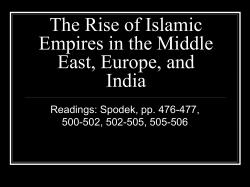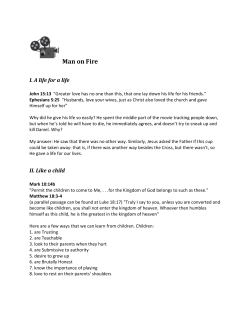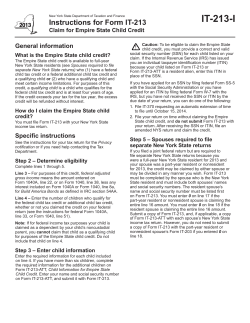
FIRST CIVILIZATIONS China Middle East Central America
FIRST CIVILIZATIONS China Middle East Central America Egypt India Peru DEFINITION • Large urban settlements (ie., cities) • Varied and complex social structure • Highly organized government • Complex religious belief system presided over by professional priests • Writing system MESOPOTAMIA Mesopotamia Sumer • Means “Land Between Two Rivers” – Tigris on the northwest – Euphrates on the southeast • Southern most region of Mesopotamia was called “Sumer” – Characterized by small, Neolithic farming villages until 3500 BC RISE OF SUMERIAN CIVILIZATION • Population explosion around 3500 BC caused the eventual appearance of twelve city-states in the region – Uruk, Ur, Lagash, Nippur, Kish, Eridu, etc. • City-state includes large, urban center, surrounded by walls, as well as surrounding countryside – Each had their own ruler, army, patron god, and set of laws – Like tiny independent countries CUNEIFORM WRITING Means “wedge-shaped” “Written” on clay tablets with wooden stylus Thousands of different characters which evolved over time. Most stood for objects but others represented abstract concepts Very difficult to master—took years and years of specialized training. Cuneiform writing was therefore not “democratic”—only a small elite had mastered and used it Motivation for inventing this system was the need to keep commercial records OTHER SUMERIAN ACHIEVEMENTS • Brick architecture • Bronze tools and weapons • Engaged in trade with places as far away as Africa and Asia • First money • First schools (trained scribes and priests) • First Literature – Epic poem – Wisdom literature • Medicinal drugs • Accurate lunar calendar GILGAMESH Akkad was inhabited by a people who had migrated there from Arabia around 5000 BC. Lived a Neolithic lifestyle and had some trade contacts with Sumer AKKAD Around 2300 BC they were united under the rule of a Using Sumer as his power warrior-chieftain named base, hewho thenthen conquered Sargon, led them rest Mesopotamia andof in aof successful invasion the Mediterranean coast Sumer—he took over all of the the Middle East—creating city-states there in a little world’s first empire over a year CULTURAL MISSIONARY • Once he had taken over Sumer, Sargon and his people absorbed Sumerian civilization and became civilized themselves – They then spread their adopted culture into new Middle Eastern regions when they conquered new territory – Sargon was thus an unintentional cultural missionary • Spread achievements of the Sumerians into new regions POLITICAL EVOLUTION • Sargon’s empire collapsed a few decades after his death in 2130 BC – In the aftermath, the Sumerian city-state of Ur briefly dominated the region OLD BABYLONIAN EMPIRE • Ur’s dominance came to an end when the city-state of Babylon seized control over most of the region – Around 1800 BC – City-state controlled by the Amorites • Tribe from Arabia that had moved into Mesopotamia earlier – Most famous ruler was Hammurabi – Created the “Old Babylonian Empire” SUMERIAN LEGACY • During the centuries that followed, the Old Babylonian Empire would also collapse, setting a pattern of rising and falling empires that would characterize the region for the next 3000 years – The original city-states of Sumer would be incorporated into these empires and in the process, the Sumerian language and the Sumerians themselves would blend into the various new groups who settled in Mesopotamia • But the cultural legacy that had created would endure to provide the foundation for a Mesopotamian civilization that would dominate the Middle East for the next 3000 years RELIGION Mespotamian God: Marduk • Mesopotamians were polytheistic – Believed in numerous gods and goddesses, each with a special function • Gods were often cruel, vindictive, petty, and unpredictable – So Mesopotamians went to great lengths to keep them appeased ZIGGURAT • Never made an important decision without first consulting the gods – Through priests who consulted the stars or engaged in augury • Built huge temple in center of city for patron god – Called a Ziggurat – Believed that god actually lived in it – Also served as economic center, since ziggurat priests controlled all the land in city-state and administered it in the god’s name MESOPOTAMIAN RULERS • Mesopotamian rulers were never priests – Although they needed the support of priests to stay in power • They served as military leaders and political administrators – Part of administrative responsibility was to enforce the law HAMMURABI’S CODE • One of earliest written law codes • Women were legally subservient to men • Women and children were completely under the power of the male head of the family • Based on legal principle of “eye for an eye, tooth for a tooth” – Therefore very brutal in terms of punishments • Degree of inequality built into the code – Status affected punishment MESOPOTAMIAN SCIENCE • Devised multiplication and division tables and formulas for finding cube and cube root • Measured circles by dividing them into 360 degrees • Developed science of astronomy – Carefully observed and recorded positions of planets and stars MESOPOTAMIAN MEDICINE • Believed illness was caused by demons entering the body of afflicted person – Devised a number of ways to drive the demon out and thus “cure” the patient • Chants and magic spells • Also believed that horrible tasting concoctions would drive the demon out – Some had some real medicinal value THE NILE RIVER • Key to civilization in ancient Egypt was Nile River – Abundant and reliable source of water for agriculture – Flooded every year • Leaving behind a rich layer of silt which fertilized crops BIRTH OF THE OLD KINGDOM • In 2900 BC, a tribal chieftain from southern Egypt united all the villages along the Nile under his rule – Zoser – Began period known as the “Old Kingdom” • 2900-2100 BC • Old Kingdom endured for 800 years until civil wars and economic burden of building and maintaining pyramids destroyed prosperity and unity – Plunged region into anarchy MIDDLE KINGDOM • Around 2000 BC, strong rulers emerged who restored united rule and order – Created Middle Kingdom • 2000-1800 BC • Cultural life and economic prosperity revived • For first time, trade links established with outside world – Palestine, Syria, and Crete HYKSOS INVASION • Entered Egypt around 1800 BC • Took control of northern Egypt and held it for 100 years – Shattered unity and ended Middle Kingdom • “Warrior-pharoah” Ahmose I drove Hyksos out around 1600 BC – Restored unity to Nile valley – Started New Kingdom • 1600-1100 BC RELIGION • Egyptians were also polytheistic – Gods took various forms: • Animals – Crocodiles and cats • Forces of nature – Nile River • Half human/half animal PHARAOH • Believed pharaoh was a god – At first he was seen as the human incarnation of Horus – Later also associated with AmonRe and Osiris • All-powerful – But he was expected to use his power to care for his people • His laws and commands were supposed to preserve ma’at (harmony and justice) • Often portrayed as a shepherd – Protecting his people AFTERLIFE • Pyramids, mummification, and tomb art all related to strong belief in the afterlife – Writing system (hieroglyphics) was invented to preserve prayers for the dead on tomb walls • At first, it was believed that only pharaoh and his family could achieve afterlife – In time, access to afterlife became more “democratic” as upper class and then commoners claimed that they too could enter it • Afterlife was viewed to contain the same pleasures that people enjoyed on earth but without the pain MUMMIES SCIENCE • Demonstrated amazing engineering skills in building the pyramids • Invented an effective system of mathematics • Developed accurate 365-day solar calendar • Doctors still believed demons caused illness but they could nonetheless correctly diagnose a large number of illnesses – Also understood that unclean conditions caused infection – Had some knowledge of anatomy NEW KINGDOM • Ahmose I’s war of liberation again Hyksos l gave rise to an intense militarism – Led to creation of an empire with the conquest of Palestine, Lebanon, and Syria • Conquests changed Egypt – Greatly enriched country – Led to creation of professional army – Increased power of priests – Accelerated commercial and cultural contacts with other regions HATSHEPSUT • Females prohibited from being pharaoh • She nonetheless dressed like a man and ruled New Kingdom for 20 years – Ruled through her weak son • Very warlike and aggressive AKHENATON • Tried to replace traditional Egyptian polytheism with the worship of a single god, Aton – Represented by symbol of the sun – monotheism • Even built new capital devoted exclusively to Aton and ordered all statues and temples to old gods destroyed – Even made it a capital crime to worship old gods in any manner FAILURE Akhenaton’s attempt to impose monotheistic on a traditionally polytheistic people was resisted by both the masses and priests He died under mysterious circumstances in 1353 BC Most likely murdered by his wife, Nefertiti Replaced by his nephew, Tutankhamon, who restored traditional polytheistic religion and tried to obliterate all references to Akhenaton and his god THE END Egypt plagued by invasions by nomads from the Lybian Desert and the so-called “Sea-Peoples” after the death of Akhenaton Also became involved in a war with the Hittites over Syria and Palestine war was a draw but it dramatically weakened both empires As a result of these problems, Egypt declined and abandoned its empire period of greatness was over by 1100 BC POWER VACUUM • Collapse of New Kingdom, Hittite, and other empires at approximately the same time created a temporary power vacuum in the Middle East – Allowed several small states to establish themselves and prosper for a while – One was the Kingdom of Israel THE PHOENCIANS • Set up string of city-states along Mediterranean coast of Middle East – Tyre, Sidon, Byblos, Berytus • Sent merchant expeditions throughout the Mediterranean Basin – Spreading Middle Eastern civilization to new areas – Established trading posts in these new regions • Some evolved into prosperous and powerful city-states, ie., Carthage PHOENCIAN ALPHABET • Simplified cuneiform writing system by reducing it down to 29 symbols – Each standing for a sound – Motivated by their desire to simplify their record-keeping • Made literacy more “democratic” by opening up the opportunity for writing to people who otherwise did not have the time and money to master cuneiform writing • Would be adopted and modified by both the Greeks and Romans – Direct ancestor of our alphabet ASSYRIANS • Assyrians were originally a tribe from Arabia who settled in northern Mesopotamia around 1100 BC – Extremely aggressive – Conquered all of Middle East and Egypt by 900 BC NASTY GUYS • Assyrians terrorized subjects into obedience – Routinely employed brutal terror: mass executions, mass mutilations, torture, and massive destruction of farmland and cities • Policy worked for a long time but it planted deep and intense resentments in the hearts of their subjects – Remained outwardly obedient while waiting for Assyrians to weaken in order to get revenge THE END • Two Assyrian subject peoples allied together, rose up and annihilated the Assyrians in 626 BC – Medes (from Iran) – Chaldeans (lived in and around the old citystate of Babylon) • Assyrian capital of Nineveh was leveled and Assyrian power was permanently destroyed CHALDEAN EMPIRE • Chaldeans then created empire, headquartered in Babylon – Called the “New Babylonian Empire” – Reached its peak during the reign of Nebuchadnezzar • Turned Babylon into most magnificent city in the ancient world – Hanging Gardens – Ishtar Gate BABYLON Ishtar Gate Hanging Gardens PERSIANS • Chaldean Empire weakened after Nebuchadnezzar’s death and was over-run by the Persians – Indo-European people, originally from southern Russia – Led by Cyrus the Great – Created largest empire in the world up until that time PERSIAN EMPIRE PERSIAN ACHIEVEMENTS • Provided unity to the Middle East for 200 years • Developed efficient administrative system – Satraphies • Built numerous roads • Created “pony express” type postal system • Tolerated different religions and customs ZOROASTERIANISM • Founded by Zoroaster • Taught that there were two gods who been battling each other since the beginning of time – One was the God of Light and Goodness, Ahrura Mazda – Other was God of Darkness and Evil, Ahriman • Human beings had to pick a side in this struggle, and they did so through their actions DAY OF JUDGMENT • Ahrura-Mazda will eventually win the struggle – And this victory will inaugurate a “Day of Judgment” • All people who supported Ahrura-Mazda will be rewarded and all those who supported Ahriman punished • Zoroasterianism stressed ethical behavior before all else – Influenced such later ethicallybased religions as Christianity and Islam SUMMARY • Middle Eastern civilizations demonstrated enormous creativity and intelligence – Built magnificent cities, organized governments, performed sophisticated mathematics, built massive public monuments, engaged in international trade, established schools, advanced the level of technology, and invented writing • But these civilizations also introduced negative aspects – Inequality, slavery, and the routine use of war to obtain political goals • Introduction and development of civilization was a mixed blessing – Brought amazing benefits but also introduced problems that remain unresolved today
© Copyright 2025



















